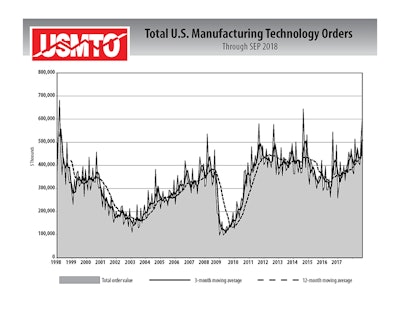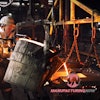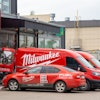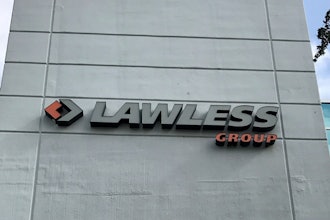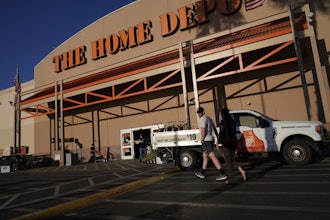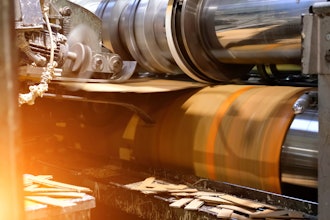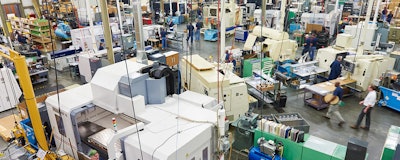
Manufacturing technology orders posted in August and September yielded the second largest two-month total in the program’s history at $1.1 billion, according to the latest U.S. Manufacturing Technology Orders Report from AMT – The Association For Manufacturing Technology. The September surge of $609 million yielded a 50 percent increase over September 2017 and a year-to-date 27 percent increase over the first nine months of 2017. After a record-breaking August, the 17 percent gain seen in September was larger than expected and a testament to the industry’s surge to increase capacity swiftly.
“We are seeing unprecedented demand for manufacturing technology as companies invest to drive up efficiencies and automate to backfill for skilled worker shortages. While we anticipated an overall uptick in orders due to IMTS, it was feared that a strong August meant companies would buy less at the show in September,” said AMT President Douglas K. Woods. “Clearly, that was not the case. While there have been some concerns about tariffs, market swings, and the mid-term elections, none of it is swaying focus on growing the manufacturing base as both domestic and foreign manufacturers increase their capex investment in the United States.”
The North Central West and South Central regions were down only in the sense that they were being compared to a much higher than average combined $500 million order total for August. The Southeast bounced back in September with a 155 percent improvement over August led by aerospace and medical equipment. The Northeast posted a 50 percent increase in orders in September built on substantial increases in orders placed by the job shop and the engines, turbines and power transmission sectors.
Nationally, industrial machinery represented the largest pickup in activity during September, climbing 152 percent over August. Job shops represented about a third of all orders, topping $200 million and up 65 percent from a strong August. Medical equipment orders were the second largest gross level of orders, something that has never happened in the history of the USMTO program. Orders from the medical equipment sector were four-fold typical monthly levels and were broad-based with significant activity in the Southeast, Northeast, and North Central West. Aerospace was the third-largest sector nationally, up 15 percent from August levels.
Most other key industry indicators were very strong. Durable goods orders had two strong months. Consumer confidence is hovering just below 100, and automobile sales are moving at a 17.4 million unit annual rate. Capacity utilization for the durable goods industries continues to edge upwards. The only negative sign is downward movement in the Purchasing Managers’ Index, from 61.3 in August to 57.7 in October. While that suggests a continuation of expansion in purchasing trends, it also suggests that growth will slow. On the upside, it could also be that increasing backlogs in the supply chain have filtered through and created a traffic jam for manufacturers to deliver their products. As the supply chain catches up, there is a strong possibility the PMI will pick up as well.
